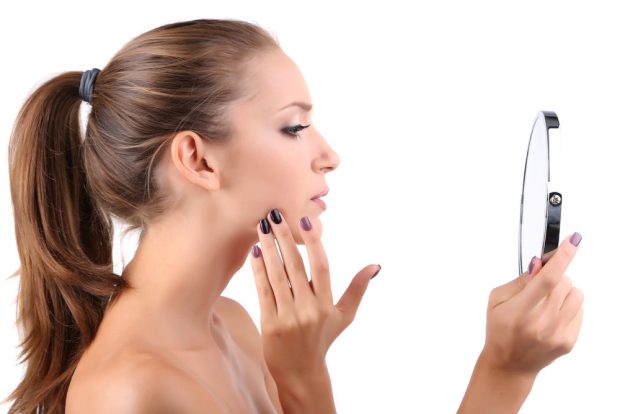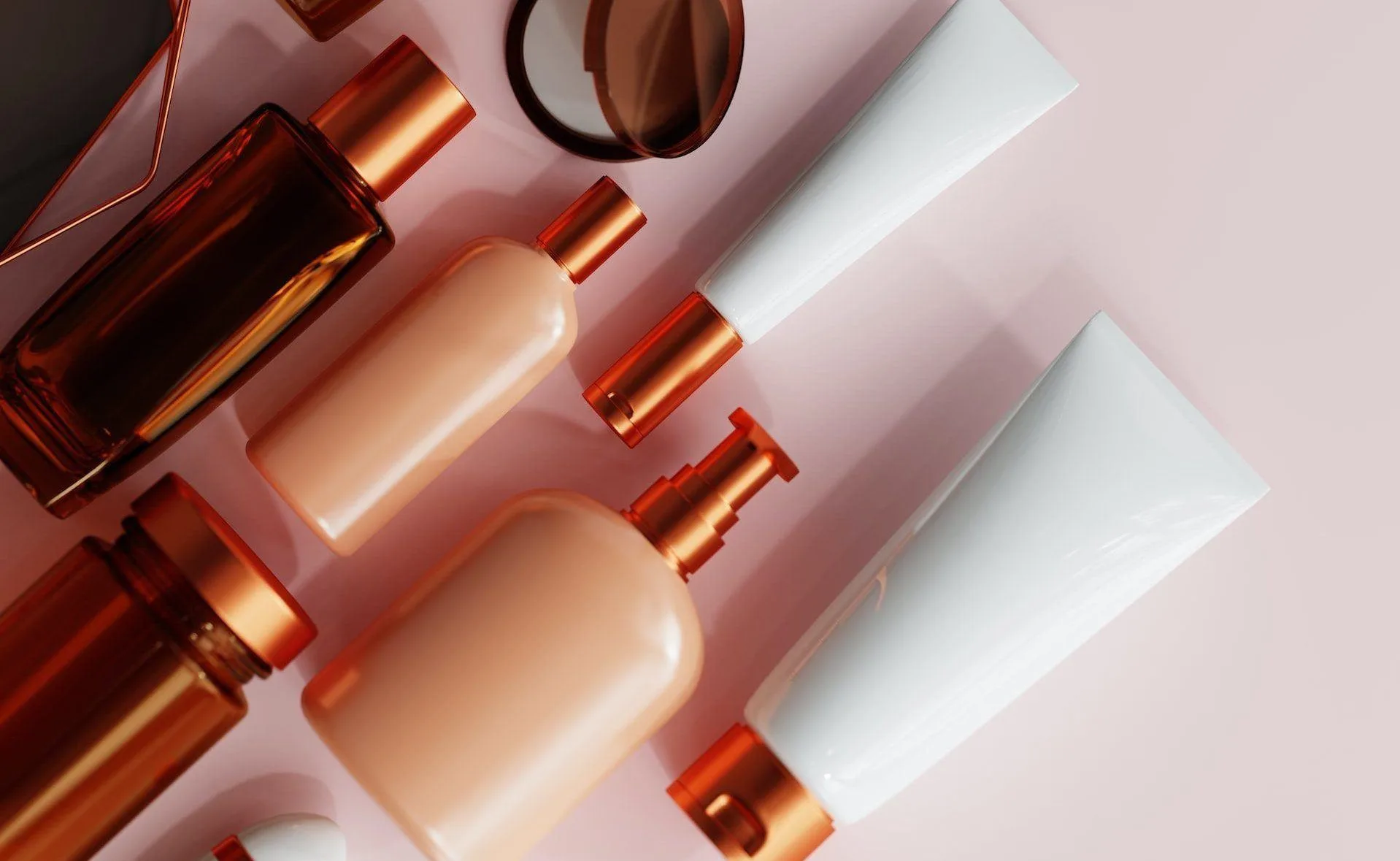Skincare products serve numerous purposes, from improving the appearance and texture of your skin to reducing signs of aging. Many of these products have active ingredients such as retinol, AHAs, and BHAs which work to promote cellular turnover. This happens due to them accelerating the removal of dead skin cells on the surface of the skin through exfoliation.
While implementing a new product into your skincare regime may seem tempting, it is important to note that while the end result may be clear, radiant, and glowing skin, a by-product of it is skin purging.
What Is Skin Purging?
Skin purging is defined as a temporary skin reaction to specific ingredients in skin care products, such as breakouts, dryness, flaking, and peeling. Dr. Deanne Mraz Robinson, a board-certified dermatologist, explains skin purging as “a reaction to an active ingredient that is increasing skin cell turnover rate.”
Caroline A. Chang, M.D., a board-certified cosmetic and medical dermatologist at Rhode Island Dermatology Institute, says:
“Skincare products, specifically retinol, and skin acids like AHAs and BHAs can cause adverse reactions to the chemical ingredients, which cause faster skin cell turnover. This increase in skin cell turnover causes you to shed more dead skin cells than usual. Removing dead skin and pushing clogged pores to the surface causes skin purging.”
When you introduce a new skincare product into your routine, you can experience an adverse reaction, including breakouts, and dry, flaky skin. While some may see it as a sign to stop using the product, it is a sign that it is working.
Mraz Robinson adds that:
“as the surface layer of skin is shed more quickly, our skin is expediting its recovery and pushing everything to the surface.”
Symptoms of Skin Purging
Symptoms of skin purging may vary from person to person due to factors including your skin type and complexion. According to research,
“it may look different from person to person, but you can get a mix of whiteheads, blackheads, papules, pustules, cysts, and micro-comedones (tiny pre-pimples that aren’t visible to the eye).
Common symptoms include:
- Blackheads
- Whiteheads
- Red, painful bumps
- Peeling or flaking of the skin
- Skin dryness
How Soon Does It Happen?
Amanda Doyle, M.D., FAAD, a board-certified dermatologist says
“depending on the strength of the product and the individual person’s response, purging can even happen the same day as when you use a new ingredient.”
While the purge isn’t ideal, it is to be expected with certain skincare ingredients.

Africa Studio/Shutterstock
Ingredients To Look Out For
Elizabeth Tanzi, M.D., founder of Capital Laser & Skin Care and Professor of Dermatology at George Washington University states that there are a few active ingredients that can be an issue for some people,
“like chemical sunscreens, benzoyl peroxide, salicylic acid, will always be a problem for them, no matter the formulation.”
Ingredients to look out for that are known for causing skin purging include:
- Retinoids: Listed as Retinol, Vitamin A, Tretinoin, Isotretinoin, or Retinyl Palmitate
- Vitamin C: Acidic forms, such as L-ascorbic acid
- Alpha-Hydroxy Acids (AHAs): Consists of Glycolic Acid, Citric Acid, Lactic Acid
- Beta-Hydroxy Acids (BHAs)
- Benzoyl Peroxide
- Fruit and Enzyme exfoliants: These are similar to AHAs due to their ability to exfoliate and dissolve the glue that keeps damaged skin cells together.
How to differentiate between purging and breakouts
|
Acne |
Skin Purging |
|
They last longer, are recurring and lead to acne scars |
Lasts for a short period and doesn’t leave a scar |
|
Appears randomly due to hormonal fluctuations, or triggers caused by diet |
Appears after starting a new product with exfoliating abilities |
|
Appear randomly, usually one at a time |
Appear together at the same time |
|
Skin is left with marks, scars, and discoloration |
Skin appears healthier afterward |
How To Ease Skin Purging
Don’t pick on your acne, as this can not only extend the purge period but also lead to permanent scarring. Don’t attempt to treat/dry them out. Mraz Robinson advises that you stay away from products that dry your skin out.
Many spot treatments (including salicylic acid and benzoyl peroxide) are exfoliating agents. Therefore, using them on purging skin can lead to extra stimulation, thus worsening the process. As your skin is in the midst of cell turnover, you need to be gentle. Be patient with it and prioritize keeping it nourished and moisturized.
This can be achieved by using ingredients such as hyaluronic acid and niacinamide. Also, the skin is particularly sensitive and vulnerable, so you should avoid touching your face, picking o the blemishes, and peeling off flaky skin.
How Long Is Too Long?
Everyone’s skin is unique, so the time frame can differ from person to person. Dermatologists advise that purging should be over within four to six weeks of using the new product.
According to Doyle, “if your skin continues to purge past six weeks while using the product, consult your dermatologist, as it might be a bad reaction to the product.”
An allergic reaction to skincare products will last longer than the six-week mark, accompanied by red, bumpy, scaly skin which is constantly itchy. If you experience this, it is advised to stop using the specific product that caused the reaction and visit your dermatologist.
Patience Is Key
Nobody wants to experience the side effects of skin purging, especially when you embark on a new skincare regime. However, it is important to note that this is a temporary skin reaction that is working towards renewing your skin from the inside out.
The ingredients which cause skin purging are crucial to skin exfoliation, which leads to the creation of new, more youthful skin. When you look at it from this perspective, it’s 6 weeks of your skin purifying itself for clear, smooth, and radiant skin.
MAIN IMAGE CREDIT: Photo by pmv chamara on Unsplash
References
- Springen, K., 2020. Clean: The New Science of Skin. Booklist, 116(19-20), pp.14-15.





![women [longevity live]](https://longevitylive.com/wp-content/uploads/2020/01/photo-of-women-walking-down-the-street-1116984-100x100.jpg)









